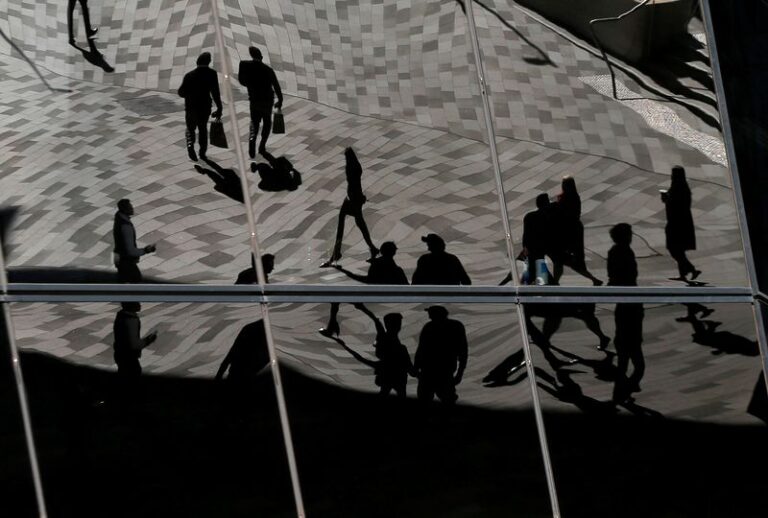Kilmar Abrego Garcia will remain in jail for at least a few more days while attorneys in the federal smuggling case against him spar over whether prosecutors have the ability to prevent Abrego Garcia’s deportation if he is released to await trial.
The Salvadoran national whose mistaken deportation became a flashpoint in the fight over President Donald Trump’s immigration policies has been in jail since he was returned to the U.S. on June 7, facing two counts of human smuggling.
A federal Judge has ruled that Abrego Garcia has a right to be released and even set specific conditions during a court hearing on Wednesday for him to live with his brother. But Abrego Garcia’s attorneys expressed concern that it would lead to his immediate detention and possible deportation by U.S. Immigration and Customs Enforcement.
U.S. Magistrate Judge Barbara Holmes also expressed doubts during the hearing about her own power to require anything more than prosecutors using their best efforts to secure the cooperation of ICE.
“I have no reservations about my ability to direct the local U.S. Attorney’s office,” the judge said. “I don’t think I have any authority over ICE.”
Holmes did not say when she would file the release order for Abrego Garcia, but it will not happen before Friday afternoon.
Judge: Government dilemma ‘completely of its own making’
Abrego Garcia, who was shackled and wearing a red jumpsuit, was expected to be released Wednesday, if only into ICE custody. But the court hearing revealed instead the competing interests between two federal agencies within the Trump administration.
Acting U.S. Attorney Rob McGuire has said in court and in filings that one of the reasons he wants Abrego Garcia to stay in jail is to ensure that he remains in the country and isn’t deported by ICE.
McGuire told the judge during Wednesday’s hearing that he would do “the best I can” to secure the cooperation of the Department of Homeland Security, which includes ICE. But the prosecutor noted, “That’s a separate agency with separate leadership and separate directions. I will coordinate, but I can’t tell them what to do.”
But Abrego Garcia’s attorney, Sean Hecker, countered that the Department of Justice and Homeland Security are both within the executive branch and seem to cooperate on other things. For example, ICE has agreed not to deport cooperating witnesses who agreed to testify against Abrego Garcia.
Meanwhile, federal prosecutors had tried to stay Holmes’ release order. But it was denied by another federal judge on Wednesday afternoon, who wrote that the government was asking the court to “save it from itself” in a situation that was “completely of its own making.”
U.S. District Judge Waverly D. Crenshaw, Jr. wrote that federal prosecutors should be making their arguments to DHS, not a court, “because the Department of Justice and DHS can together prevent the harm the Government contends it faces.”
“If the Government finds this case to be as high priority as it argues here, it is incumbent upon it to ensure that Abrego is held accountable for the charges in the Indictment,” Crenshaw wrote. “If the Department of Justice and DHS cannot do so, that speaks for itself.”
Crenshaw, however, will allow prosecutors to file a brief in support of a motion to revoke the magistrate’s release order. An evidentiary hearing is scheduled for July 16.
In court on wedding anniversary
Abrego Garcia pleaded not guilty on June 13 to smuggling charges that his attorneys have characterized as an attempt to justify his mistaken deportation in March to a notorious prison in El Salvador.
Those charges stem from a 2022 traffic stop for speeding in Tennessee, during which Abrego Garcia was driving a vehicle with nine passengers. At his detention hearing, Homeland Security special agent Peter Joseph testified that he did not begin investigating Abrego Garcia until April of this year.
Holmes, the magistrate judge, wrote in a ruling on Sunday that federal prosecutors failed to show that Abrego Garcia was a flight risk or a danger to the community. He has lived for more than a decade in Maryland, where he and his American wife are raising three children.
However, Holmes referred to her own ruling as “little more than an academic exercise,” noting that ICE plans to detain him. It is less clear what will happen after that. Although Abrego Garcia can’t be deported to El Salvador — where an immigration judge found he faces a credible threat from gangs — he is still deportable to a third country as long as that country agrees to not send him to El Salvador.
Abrego Garcia’s wife, Jennifer Vasquez Sura, said during a news conference before Wednesday’s hearing that it’s been 106 days since he “was abducted by the Trump administration and separated from our family.” She noted that he has missed family birthdays, graduations and Father’s Day, while “today he misses our wedding anniversary.”
Vasquez Sura said their love, their faith in God and an abundance of community support have helped them persevere.
“Kilmar should never have been taken away from us,” she said. “This fight has been the hardest thing in my life.”
















